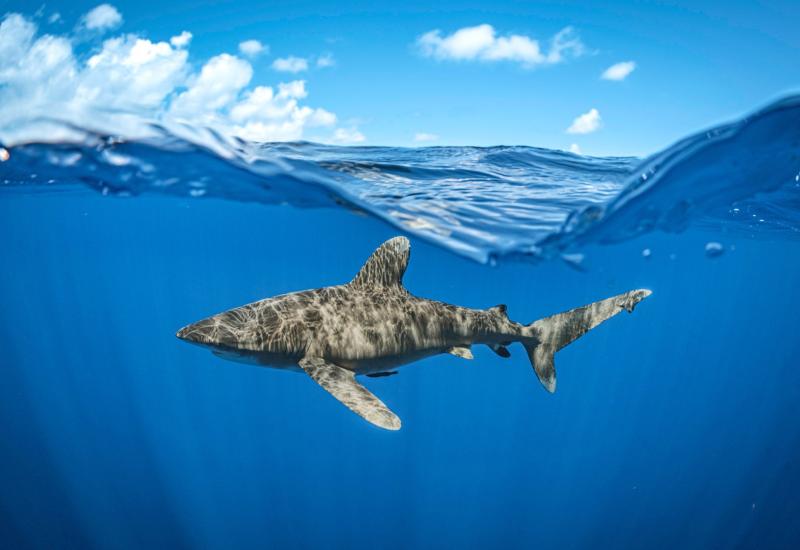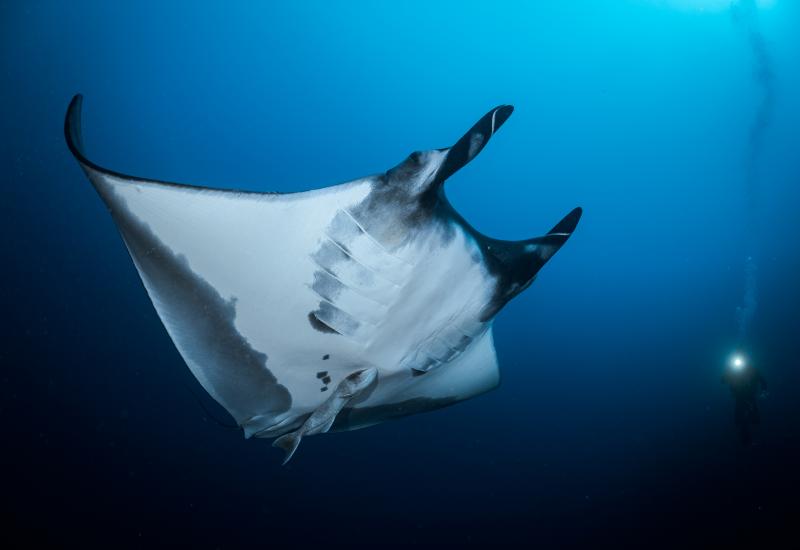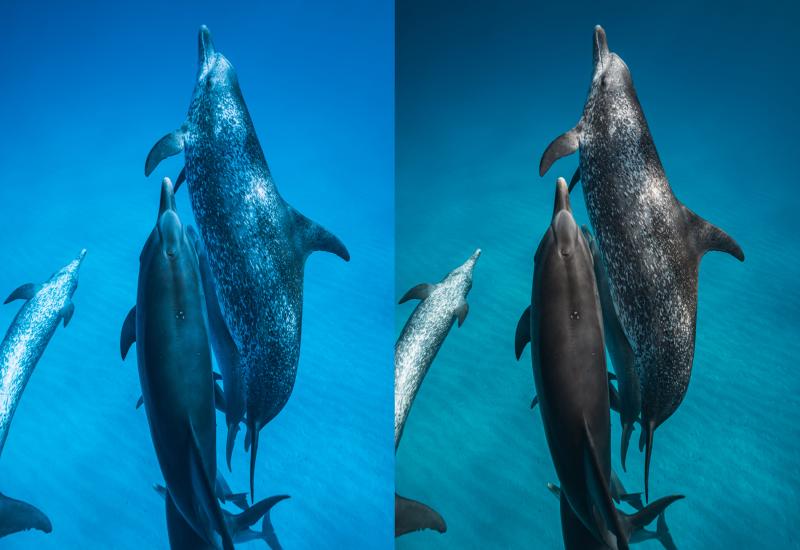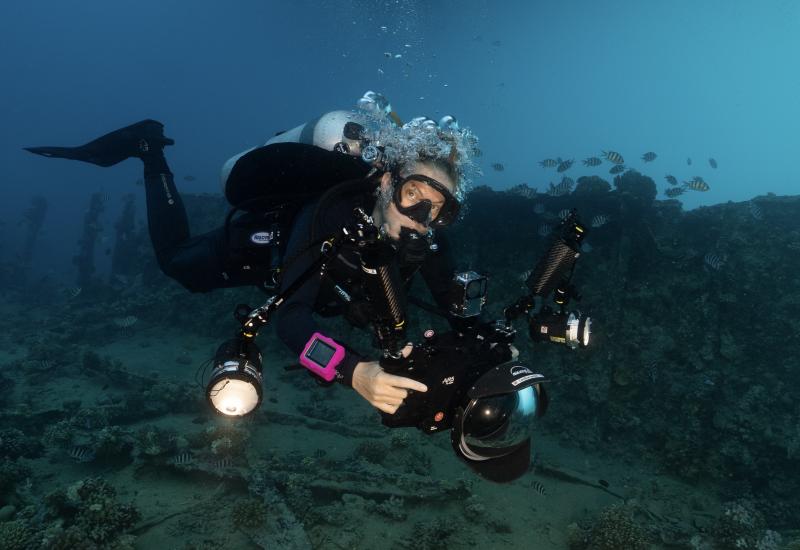How to Photograph the Red Sea's Wrecks and Reefs
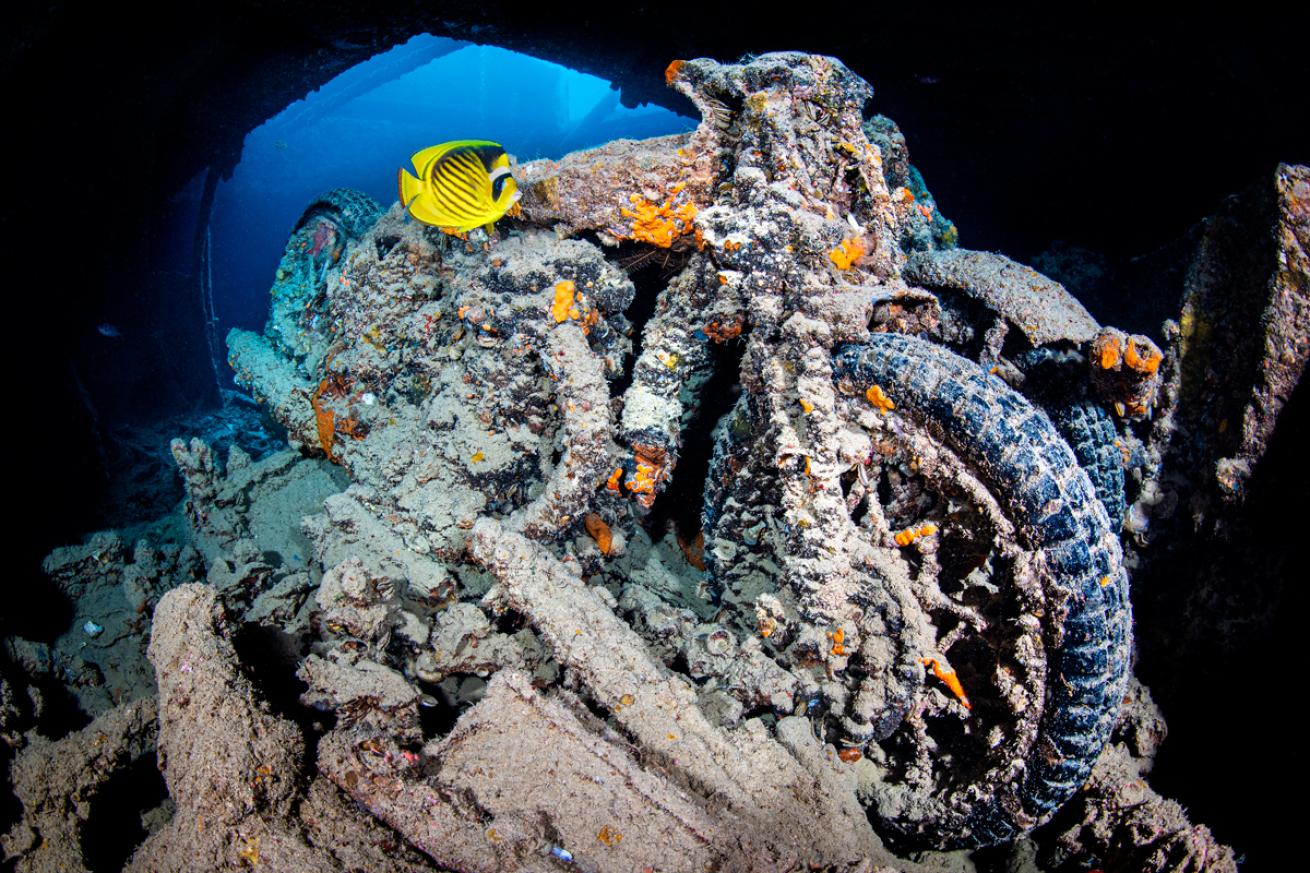
Alex MustardThe SS Thistlegorm is packed with subjects, but good backgrounds are hard to find.
Surrounded by desert, with no rain or rivers, the Egyptian Red Sea is blessed with reliably excellent visibility and corals that grow right to the surface. Many reefs drop off precipitously and pulsate with life, with bright red and pink soft corals and thick clouds of anthias fish. Bright, electric-blue water creates a stunning color palette. To my eyes, it is the intensity of these primary hues that makes Red Sea reefs the most beautiful in the world.
The Red Sea is also a maritime thoroughfare, connecting Asia with the West via the Suez Canal. The hazardous shallow reefs and World War II battles have produced some impressive wrecks. Offshore reefs attract rarities like hammerhead, thresher and oceanic whitetip sharks, there are resident and friendly pods of bottlenose and spinner dolphins, as well as predictable encounters with the elusive dugong in certain coastal lagoons. The Egyptian Red Sea is a wishlist of conditions and subjects for wide-angle underwater photography.
Tip 1: Super Scenes
If you try and capture all the bustle and beauty of a reef, your photos will lack direction. Instead, build your photo around a key feature in the scene—like an outcrop or a dominant soft coral—as a foreground and let the more distant scenery fill out the frame. Once you’ve got the foreground, you can build your picture. Photographs represent a three-dimensional world, and you can incorporate layers in your pictures to create depth. Often small changes in the composition, or the moment you press the shutter, makes the most of the layers and creates a more involving picture. Distant elements like silhouetted reef, the surface and the sun all create layers. Fine-tuning your framing will make the most of them. Red Sea reefs are more than just walls. Pinnacles are often particularly suited for photography and attract fewer regular divers. Their shape also makes for excellent backgrounds when you can find a good foreground subject close to their base. Caverns are also highly photogenic, especially in the middle of the day when the sun is highest.
The sun is not always a blessing on the open reef. Colorful soft corals flourish in shady areas, so always check the dark (typically northern) sides of pinnacles and reefs for the richest growth. When the sun is strong, it can be overpowering and it is easier to exclude it from your pictures. The trick is to look for a subject that is in the shade. This means that when you frame it up, the sun will be helpfully hidden behind the reef. Framing subjects on the edge of the shade allows you to have a hint of the sun and even beautiful sunbeams in your shot, without the hard-to-handle sun ball. As the sun dips to a lower, more photographically helpful position in the sky, it is time to exploit it. Furthermore, many fish become more active at this time. Lionfish, for example, are often out and posing. Soft corals inflate, and anemones ball up, revealing their colorful skirts. When capturing rays, it is essential to stay shallow. Fortunately, the Red Sea reefs provide subject matter right near the surface. The best light is during the last hour or so before sunset, and as the sun gets lower, you need to get shallower for the best images.
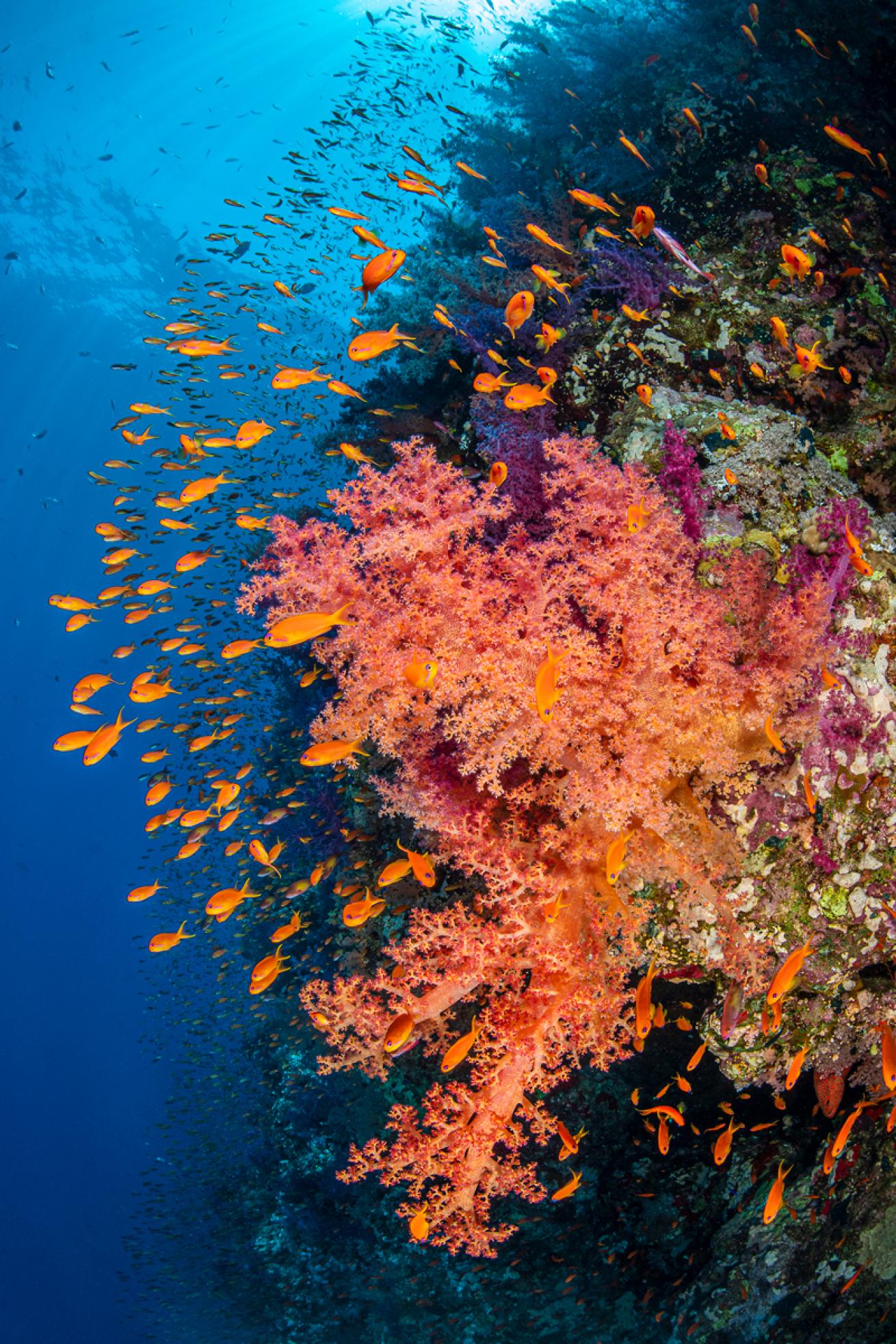
Alex MustardThe red soft coral anchors the composition, while the anthias and silhouetted reef complete the frame.
Tip 2: Wreck Wonderland
Wrecks look particularly impressive when you shoot their large recognizable features, like the bow, stern or bridge. However, going for these compositions means that scene will be too large to light with strobes, so turn them off or they will only illuminate backscatter. When working with just ambient light, the most critical consideration is its direction. The clear water and relatively shallow depth of the Red Sea’s wrecks make the direction of the ambient light particularly powerful.
Since you can’t move the wreck, you have to time your dives to have the light where you want it. For example, the famously photogenic stern of the Giannis D is particularly pleasingly lit on the second dive of the day, as the sun cuts across it, illuminating detail and creating shadows that reveal the three-dimensional shape. Most dive trips don’t precisely time dives for the light, which is why photographers gravitate toward workshops and other photographer-dominated group trips.
The Red Sea’s most famous wreck is the SS Thistlegorm, a British military supply ship from World War II, sunk with over 60 military trucks and over 100 military motorbikes on board. Diving the Thistlegorm is an incredible visual and emotional experience, but as a photographer you want to bring back some images, which is challenging, because the cargo holds, where all the good stuff is, are deep, dark and silty. The trick to winning compositions is to frame vehicles with blue water behind to create depth. Swim to the back of the hold, turn around and work back to the light, so that the important background is ready and waiting.

